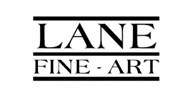
Our new website is Under Construction
If you need to contact us please call us on
+44(0) 207 3733130 | +44(0)7714 151015 | cf@lanefineart.com
Lane Fine Art Limited was established over 50 years ago in London, and is one of the leading suppliers of fine and rare British paintings to collectors, decorators and museums around the world.
It is run today by Christopher Foley FSA who has some 35 years’ experience as a director of the company, and who is a regular contributor to academic journals and reference books in the field of British Art.
We hold one of the largest stocks of British Paintings in London, and have a broad selection of more than 500 Sporting, Marine, Landscape, Still-life and Portrait oil paintings covering the period 1550 – 1830. We usually have in stock examples by the major artists of the period: we have in the last year sold works by, amongst others, JMW Turner, Sir Anthony van Dyck, George Stubbs, Thomas Gainsborough and Sir Joshua Reynolds. We also have a smaller but choice stock of Old Master Paintings, principally from the Italian Schools from the 14th century onwards.
Lane Fine Art acts as agent and advisor for many collectors, museums and art institutions around the world. We frequently act as an independent valuer for Government and Charitable organizations.